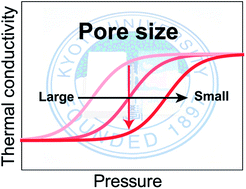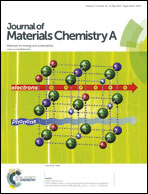The thermal conductivity of polymethylsilsesquioxane aerogels and xerogels with varied pore sizes for practical application as thermal superinsulators†
Abstract
High-performance thermal insulating materials are desired especially from the viewpoint of saving energy for a sustainable society. Aerogel is the long-awaited material for extended applications due to its excellent thermal insulating ability. These materials are, however, seriously fragile against even small mechanical stress due to their low density, and their poor mechanical properties inhibit their practical use as superinsulators. In this paper, we report relationships between the thermal conductivity, pore size and mechanical properties of organic–inorganic hybrid polymethylsilsesquioxane (PMSQ) aerogels with improved mechanical properties and controllable pore sizes from ∼50 nm to 3 μm. The dependency of thermal conductivity on gas pressure and pore properties can be well explained by the thermal conduction theory of porous materials. These PMSQ aerogels show improved mechanical properties due to their elastic networks, which enable easier handling compared to conventional aerogels and facile production by simple ambient pressure drying. An aerogel-like “xerogel” monolithic panel has been successfully prepared via ambient pressure drying, which shows a low thermal conductivity (0.015 W m−1 K−1) comparable with those of the corresponding PMSQ aerogel and conventional silica aerogels. These results would open the gate for practical applications of these porous materials.


 Please wait while we load your content...
Please wait while we load your content...